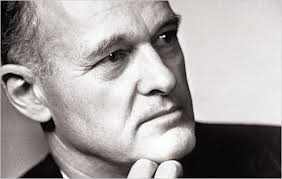George Kennan and the Environment: With Friends Like These…
One Cannot Divorce His Environmentalism From His Racism

Last year, I read John Lewis Gaddis’ magisterial biography of George F. Kennan, one of the prime architects of American Cold War policy and a distinguished foreign policy intellectual. I was surprised — and not a little pleased — to learn from that book that Kennan was something of a pioneering environmentalist, thinking about these issues long before it became fashionable. As early as 1954, in his book Realities of American Foreign Policy, Kennan argued:
[The] problem of the adjustment of man to his natural resources, and the problem of how such things as industrialization and urbanization can be accepted without destroying the traditional values of civilization and corrupting the inner vitality of its life—these things are not only problems of America; they are the problems of men everywhere.
In 1970, Kennan wrote an essay for Foreign Affairs entitled “To Prevent a World Wasteland”, which was probably the first environmental piece that journal ever published. The piece shrewdly pointed out what is now a commonplace, viz. that significant environmental problems have international dimensions, and proposed an international agency for the collection of environmental information and the promulgation of voluntary environmental standards — sort of a more effective United Nations Environment Programme.
All very well and good. But Kennan’s collected diaries have recently been published, and as David Greenberg observes in The New Republic, the man was a thoroughgoing racist and anti-Semite (a fact Gaddis elides and downplays): the diaries, Greenberg reports, ring out “with astonishing outbursts of bigotry and misanthropy.”
The diaries establish beyond any doubt that Kennan was given to gross and derogatory generalizations about virtually all foreign peoples. (Historians have known about Kennan’s ugly qualities, but the diaries lay it bare for any reader.) His belief in national character was strong, and if it led him to important insights about Russian behavior, much more often it led to repulsive and ill-informed slurs. The shockers start early. During his junior year at Princeton, he writes about a conversation with a friend called Army. “He half-converted me to his ‘extermination of the lower races’ idea,” Kennan writes. “I cannot see why it is wrong in principle.” As a twenty-eight-year-old Foreign Service officer, he remains convinced that the world’s problems are “essentially biological” in that “We have a group of more or less inferior races…. No amount of education and discipline can effectively improve conditions as long as we allow the unfit to breed copiously and to preserve their young.” Nor does Kennan learn, in his long globe-trotting career, to see this rubbish for what it is. At the age of eighty, he is still confiding to his diary his enthusiasm for eugenics. “If I had my way…” he muses, “Men having spawned more than 2 children will be compulsively sterilized. Planned Parenthood and voluntary sterilization will be in every way encouraged.” Policy planning indeed. (Immigration, too, “will be effectively terminated.”)
Who were these “inferior races” whose perpetuation Kennan deplored? Jews, to be sure. But the Jews were in good company. In fact, it is hard to find an ethnic group that escapes his contempt. An Italian he meets while traveling is a “typical dago—wears a cap, a bushy, black, moustache … talkative in a weak, ignorant, furtive, sneering way.” The Georgians, he proclaims, are “a lazy, dirty, tricky, fiercely proud, and recklessly brave people. They never seem to work unless they have to.” The Iraqis he encounters on a trip to Baghdad are “a population unhygienic in its habits, sorely weakened and debilitated by disease, inclined to all manner of religious bigotry and fanaticism, condemned by the tenets of the most widespread faith to keep a full half of the population, namely, the feminine half, confined and excluded from the productive efforts of society by a system of indefinite house arrest.”
No group is too small or too far outside Kennan’s expertise to elude his confident condescension. Zambians are wracked by “suppressed anger” and “ostentatious cockiness.” Lithuanians are “foolish.” What he finds ugly about southern stretches of New England—the landscape “grown over by scrub forest”—he attributes to the “Italians and Portuguese, the tone set increasingly by the Catholic Church.” Even the Norwegians—of whom his wife was one—“for all their admirable characteristics … have small regard for subtleties & refinement of thought.”
I cannot help but suspect that Kennan’s brand of environmentalism and his racism were linked. The comments on the landscaping habits of Italians and Portuguese are the most obvious, but his attention to the “biological” — otherwise something we like about environmentalism — made it easy for him to endorse social Darwinism. “Isn’t it amazing,” one can almost here him say, “how nature gets rids of inferior beings and groups!” These swarthy races, he suggest are so terrible because they despoil nature, make it filthy, and bring on disease. Like the Sierra Club dissenting minority a few years back, he wants to end immigration.
Kennan is often seen as a conservative, and as Greenberg emphasizes, his general antipathy for humanity certainly makes him an elitist. But on the environment and race, his outlook seems “progressive,” not in the modern sense, but in the far different early 20th century sense. It is a progressivism of science, efficiency, conservation, Euclidean zoning, and eugenics — just the sorts of things that might appeal to an upper-middle-class midwestern Protestant like Kennan.
Kennan has an outstanding reputation, but the more one scratches it, the less you like him: his 1946 Long Telegram was a brilliant document, but after that, he seemed to have little constructive to say that had not been said elsewhere. And dig deeper into his private thoughts, it gets even worse. Environmentalism has a very strong intellectual pedigree from a variety of anti-racist sources — it’s best to leave Kennan out of the canon.
Reader Comments
2 Replies to “George Kennan and the Environment: With Friends Like These…”
Comments are closed.







Great post, Jonathan. George Perkins Marsh’s Man and Nature (1864), one of the foundational modern environmental texts, also blamed Catholocism for environmental degradation in Southern Europe.
Keenan is just the tip of the iceberg. Read Joanthan Peter Spiro, Defending the Master Race: Conservation, Eugenics, and the Legacy of Madison Grant (University of Vermont Press: Burlington, 2009), which tells the story of Madison Grant, one “one of the founders of the conservation movement,” who helped preserve California;s redwoods, saved American bison from extinction, helped create Glacier & Denali National Parks, and protected whales, bald eagles, and pronghorns. But Grant’s book “The Passing of the Great Race” was such an ode to eugenics and white supremacy that it was cited by the Nazi defendants at the Nuremberg Trials as inspiring their actions. The early elitist, eugenics strain of the Progressive movement is a real stain on environmentalism which we understandably now want to forget.